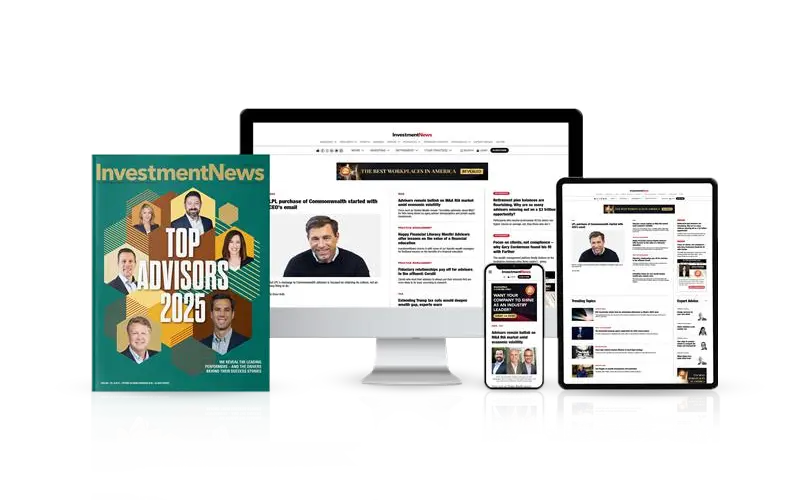

In my role as an independent philanthropy advisor, I teach. One of the most popular presentations I offer relates to different ways to make donations to charity. That instruction seems to be timeless, given that $557 billion was donated to charity in 2023 (according to the Giving USA 2024 report), up over $50 billion from the prior year!
So how does a donor-advised fund fit into the conversation?
Most people give from their checkbooks, which is fine for the occasional gift to charity – or if you’re a person who likes to make an automatic donation each month from your checking or savings account. But, if you donate gifts to multiple charities over the course of the year, it can become a bit cumbersome to determine how and where to send money to so many organizations. And, unless you are a great bookkeeper, it is not quite consolidated, either! So that’s where a donor-advised fund, or DAF, comes in.
DAFs are a terrific way to do several things....
Here are six reasons to open a DAF:
1) You can donate money for charitable purposes without having to make a decision just yet on where to make a grant recommendation to a favorite charity.
2) You can obtain a potential charitable income tax deduction if the gift value exceeds the standard deduction on your tax return.
3) You can invest the money in a diversified portfolio, or let it sit in a cash position, while you determine where you should make your grant recommendation.
4) You may remain anonymous, if you like, as it relates to charities receiving grants from your DAF.
5) You can name a successor advisor to your DAF should you pass away.
6) You may fund your DAF with non-cash assets like real estate, closely held stock, or tangible personal property.
Commercial DAF sponsors like Fidelity Charitable, DAFgiving360, and Vanguard Charitable are excellent choices for those who want a fast, inexpensive, and technologically streamlined way to donate. Community foundations like Chicago Community Trust or California Community Foundation also offer DAFs as part of their portfolio of fund choices, and they can offer customized, local suggestions for where to make grants. There are also single-issue charities that sponsor DAFs, which include universities, hospitals, and faith-based organizations.
While DAFs offer many benefits to donors and charities, they aren’t without controversy.
While nearly $250 billion is currently invested in DAFs and growing, there is no current time requirement regarding when to donate those assets, nor any annual minimum distribution requirement. The assets can remain in the DAF and grow tax-free. And critics will claim around 40 percent of DAFs do not make any distributions at all. However, DAFs – according to the annual report from the National Philanthropic Trust – collectively pay out over 20 percent per year of their total assets in grants to charity, with some DAFs pay out a full 100 percent of their assets each year (like a pass-through).
By contrast, private foundations (with nearly $1.5 trillion in assets collectively) must distribute five percent annually (though they can then invest that five percent in a DAF). The average payout from private foundations, however, is only six percent. As such, it is always curious to me that there is not more emphasis on forcing a larger percentage of money out of private foundations, including NOT offering the opportunity to use them to fund DAFs – but rather, compelling them to get the money out into the nonprofits that are counting on them.
As a result of some criticisms, the IRS proposed new DAF legislation at the end of 2023. This proposed legislation focused on clarifying confusion by providing definitions for DAFs. Additionally, the IRS seeks to identify certain distributions as taxable and declare that donors are not the only parties considered DAF advisors: the donors’ personal financial advisors are, too.
Proposed legislation concerns include a personal investment advisor (PIA) fitting under the definition of a donor advisor, which could be confusing. Also, the broad definition of DAFs could include field-of-interest funds and other offerings from community foundations. The definition of a DAF distribution in the proposed regulations could also lack a carve-out for administrative expenses. Lastly, concerns linger that the regulations may not be retroactively effective, or even have a transition period.
So, with all this hubbub, what is one to do? The growth and breadth of the DAF industry continues to create misunderstandings and tensions among stakeholders, including nonprofits, journalists, and legislators. The continued growth of the industry also attracts staff members from a wide variety of professions, experiences, and levels of understanding of DAFs and the larger philanthropic sector.
What is the answer? The American College of Financial Services recently developed a curriculum that can serve as a training ground for staff at DAF-sponsoring organizations and encourage the growth of a common language and practice in the industry. The industry is ready for a specialized curriculum that trains staff in the various stages of a donor’s philanthropic journey and the successful management of DAFs as a philanthropic tool. This curriculum will help people understand both what unifies the DAF industry and how DAF sponsors vary in choices about policies, practices, and services.
The college will offer the curriculum in a 1.5-day, in-person conference for 300 to 350 staff from the DAF sponsor industry; the conference is scheduled for early April 2025 in Dallas, TX. The college will award people who complete the curriculum a new DAF Professional Certificate, which includes at least 12 CE credits. Focal points include DAF sector fundamentals, maximizing opportunities to give, maximizing opportunities for impact, and navigating change.
Registration is open; see here for more details: Donor-Advised Funds (DAF) Professional Certificate
Richard “Rick” Peck is an independent philanthropy advisor with Richard C. Peck Consulting, LLC and is about to unveil The Philanthropy Guy, a comprehensive charitable giving resource hub. Peck is the incoming president of the board of directors of the International Association of Advisors in Philanthropy (AiP) and a member of the American College of Financial Services FinServe network.

Most firms place a limit on advisors’ sales of alternative investments to clients in the neighborhood of 10% a customer’s net worth.

Those jumping ship include women advisors and breakaways.

Firms in New York and Arizona are the latest additions to the mega-RIA.

The agent, Todd Bernstein, 67, has been charged with four counts of insurance fraud linked to allegedly switching clients from one set of annuities to another.

“While harm certainly occurred, it was not the cataclysmic harm that can justify a nearly half billion-dollar award to the State,” Justice Peter Moulton wrote, while Trump will face limits in his ability to do business in New York.
Orion's Tom Wilson on delivering coordinated, high-touch service in a world where returns alone no longer set you apart.
Barely a decade old, registered index-linked annuities have quickly surged in popularity, thanks to their unique blend of protection and growth potential—an appealing option for investors looking to chart a steadier course through today's choppy market waters, says Myles Lambert, Brighthouse Financial.
